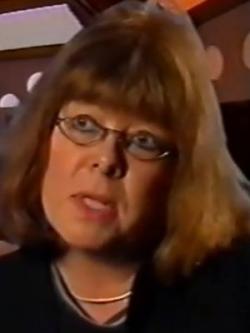 This Q&A was held by the administrators and members of the Doctor Who Missing Episodes Discussion Group on Facebook. Sue Malden is considered a legend of Doctor Who history. She became the first Television Archive Selector at the BBC in the late 1970's and was responsible for putting an end to the junkings and wipings of Doctor Who (and other programms) tapes. Without her the BBC archive today would hold even less 60's and 70's Doctor Who episodes.
This Q&A was held by the administrators and members of the Doctor Who Missing Episodes Discussion Group on Facebook. Sue Malden is considered a legend of Doctor Who history. She became the first Television Archive Selector at the BBC in the late 1970's and was responsible for putting an end to the junkings and wipings of Doctor Who (and other programms) tapes. Without her the BBC archive today would hold even less 60's and 70's Doctor Who episodes.Joe Crammond, Andrew O’Donnell & Calum Corral: What do you believe was your most important rescue for the archives, the recovery you are most proud of, for a) Doctor Who b) general TV? And if you could have saved a single missing episode of Doctor Who, which would it have been?
Sue: I think that just finding any missing Dr Who episode was a tremendous achievement. With regard to other tv programms – the missing Dads Army finds were great and have been shown by the BBC so many times.
Carl Strehlow: What were your impressions on Philip Morris finding most of The Web of Fear and Enemy of the World? And do you think of 'what if' we went to went to search physically in the first place we could have at least had those episodes back and possibly others?
Sue: Phil’s achievements are amazing – a tribute to his determination and tenacity . I agree if we had been able to visit foreign archives in person all that time ago we might have found these and others earlier, but we relied on letter contact with people in these other archives
Grant Wheelwright: What does Sue think happened to Tenth Planet 4 and Daleks Master Plan 4 after their visits to Blue Peter for clip usage?
Sue: This is a mystery I could not get to the bottom of. I am checking details again now
(Note: Sue originally provided the above answer with her partial response. She provided the follow-up answer below at a later point)
Sue: There was a loan record set up for the Master Plan episode it was sent to the BP film editor in October 1973 and it was logged that the print never came back to the Library. The Tenth Planet episode was not originally logged on Infax/FLOL which implies that it was accessed from Enterprises at Villiers House, as with certain other clips that survive from missing episodes of Doctor Who.
Ian Ferrier: Apart from Doctor Who which is your most wanted missing TV show you would like to see recovered?
Sue: Bob Dylan appeared in a play called MadHouse on Castle Street, transmitted in 1963
Mark Backwell: When did you realise just how much material was missing, and were you shocked by the amount or had you expected to find so much missing?
Sue: When I first began working in the BBC library like many others, I presumed that everything that had been broadcast had been put away safely on their shelves. I became the Archive Selector in 1978 against a background of the Asa Briggs report into the BBC Archives and it was then that I realised that not everything had been kept and I was most shocked and needed to find out why programmes had not been kept in the archives. This is when I learned about live transmission, technology issues, re-use value of videotape, contributor rights issues - all of which led to tapes not surviving.
Justin Watson: Many Dr Who fans demonise Pamela Nash for the destruction of overseas duplicates. Given that she he had ordered the creation of many of the film negatives in the first place (without which we may not have many of the episodes now) and that it wasn't her role to keep backups - they were just overseas prints and the BBC's attitude then was that TV was ephemeral -
Do you have a view of Pam Nash's role back then? Is it right that she should be vilified, or do you think that the situation was more complicated than that?
Sue: I think it quite wrong to vilify Pam Nash. Justin, you are quite right. Her job in BBC Enterprises was to (among other things) organise the copying and distribution of BBC productions for BBC Enterprises clients. As I understand it this involves arranging for duplicating masters from the original BBC masters to be made solely for Enterprises use – to copy from, thus saving wear on the original BBC master . Sometimes this would be a film recording from a 2” tape copy (and sometimes a black and white copy of a colour original). Pam was not aware of what the BBC subsequently chose to do with its masters. She was fulfilling her role meeting Enterprises requirements. Even then the BBC was not a “joined up“ organisation!
As you say – the fact that this BBC Enterprises activity was in operation parallel to the main BBC functions of production and transmission does at least mean that additional copies of programmes were being made and distributed to many countries, which has meant that the chances of at least one copy of a programmes were increased (to later be found).
I found that once Pam understood what had been happening to BBC master tapes she was helpful to our quest, but very clear that she was not responsible for the BBC wipings.
Paul Mitchell: Hi Sue, how are you? Thanks for all your hard work over the years trying to recover Doctor Who, Z Cars and many other programmes. Are you still involved in trying to recover missing episodes?
Sue: Hi Paul, many thanks. I am not directly involved these days, but do like to help out where and when I can.
Brad Phipps: Thanks for the Q&A, Sue. My question is how much of a process was it back in the 1970's to realise there had been a mistake in junking the BBC's archive? Was there apprehension from other departments to abort junking in favour of retaining the status quo (i.e. continuing to junk)? What was the reaction (if any) of the unions when the BBC began retaining material for potential domestic sales?
Sue: The Asa Briggs report on BBC archives in 1978/9 was crucial in highlighting the need to review and bring consistency to the BBC’s retention activities. This report, among other things, recommended the creation of the post of an Archive Selector. When I first began it was so helpful to have this report to refer to if I met any resistance from production managers!
Nigel Peever: Video recorders have been around for decades. When did staff at the BBC first think as a germ of an idea, "in the future people will have these things in their homes and they might want to access these old programmes"? Or did it just suddenly dawn on them just before the Revenge of the Cybermen release?
Sue: I do not know when home video sales first appeared, but I would presume as soon as Enterprises (now Wordwide) became aware of the commercial opportunity. But until then there were no domestic video rights negotiated or paid to the contributors so the back catalogue would need to be re-cleared – another commercial decision. Going forward when a programme was made Enterprises would have to express an interest in it, so that the appropriate rights could be negociated with all the contributors. Eventually these rights were written into most BBC contracts.
Christopher Springate: When you started checking the archive for Doctor Who, were there any records of non-theatrical sales (generally donated to areas like the armed forces etc. ) or was there nothing like that? I believe there were index cards for each DW story held by what is now BBC Worldwide.
Sue: I never found any formal records of non commercial distribution. There were certainly index cards for Enterprises (now Worldwide) holdings and distribution
Stuart Halliday: Was it true, Sue, that the directors or producers of a programme had to sign a form saying that there was no merit in keeping a story on tape? If they said no, it was junked?
Sue: It was certainly a production decision to wipe or keep and I think the wiping sheets may have been signed by the department managers, but I don’t think every individual tape was signed away!
John Fulbrook: Beyond broadcasters, is there a possibility other organisations such as government departments obtaining episodes from the 60's?
Sue: The BFI did; government overseas departements did, but I don’t know on what basis and we did try to get programmes back from remote places such as the Ascension Islands.
William Frame: This is broader than Doctor Who. I hope that's alright. We're told the BBC, and I assume other broadcasters, couldn't keep everything. So was there a specific set of rooms or a building designated for this. Was it running some sort of system where new programs went in one end and the oldest programs went out the other to the skip to make space? I'm making it sound very simplistic, I'm sure it must have been much more complex. Thank you for giving some of your time to answer questions.
Sue: In the early days the VT programme tapes were managed by VT Engineering on behalf of the Production departments who would decide which of their tapes they wanted to retain depending on the significance of their content, the copyright and contractual arrangements for that programme and repeat or sale potential. In the late 1970's the library became responsible for this store and when I was appointed I could override the production decisions to wipe – using the BBC’s section criteria thus taking a wider view of the value of the programme.
Dave Wood: Not limited to Dr Who, but can Sue tell us what to do if fans stumble across BBC material at boot-sales, junk shops etc? I live quite close to London and I often see material that may or may not be of interest, usually on old video formats, or reel-to-reel audio tapes. Is there any value in this material and should we try and get it all back, or are they just junk copies on obsolete formats that have been thrown out by the corporation on purpose as they switch to digital formats? Also what is a fair price for us to pay and would we be reimbursed for expenses by the BBC/BFI if we have to pay out on material that might be of interest to the corporations, but might not be of any immediate interest to us as individuals? I'd be fascinated to have some advice and guidance.
Sue: It is always worth following up on any old tv or radio recordings you come across. Dick Fiddy who organises “Missing Believed Wiped” at the BFI is the best person to contact. In general it is not likely that VHS are worth collecting because the broadcast master probably has been retained. Most interesting would be film recordings and 2 and 1 inch videotapes. All BBC material that is not required was supposed to be wiped first, recycled or sent for landfill, but I know things slipped through this process!
I cannot advise on a fair price to pay or whether it would be reimbursed by the rights owners – but I would hope so. Dick is the best person to check with, especially if possible before buying. I realise this is not so easy at a boot sale.
Simon Luckin & Steve Traves: Were there any countries or types of countries that were difficult to get a response from when asking for old material to be returned? For example, countries like Ethiopia, when it was under a dictatorship, and we know that some Dr Who was sold to Iran. It's obviously rather a difficult place to approach. Do you know if they have been contacted again since the classic "Who in the name of Allah are you talking about" response many years ago?
Sue: I think almost everywhere I contacted responded, mainly because I was contacting people in the libraries. I cannot remember any rejects. Whether they all looked in the relevant stores is another matter. I do not recollect the quote, but certainly an archivist in Iran TV was most helpful some years ago
James A Murray: Do you think there are any more missing episodes out there ?
Sue: Never say never!!! I think it is possible that more will be found – but who knows where!!
Admins: I'd like to ask Sue to tell us a little about her career leading up to becoming the BBC Archive Selector? Also, I’m interested in hearing about what she's been up to since leaving the BBC.
Sue: I did a degree in Economics, specialising in Economic history. My first job after leaving college was for about a year in the library of Birkbeck College London. I enjoyed library work, so I decided to persue this as a career and left Birkbeck to undertake a post grad diploma in Information Management at the Library School of the Polytechnic of North London. This ran for a year from January to December. Whilst I was there the BBC Film library advertised for student holiday relief work and I was a successful applicant. I returned to work there in December when I qualified – as an assistant librarian. I worked in all areas of the library, including intake. In 1975 I was sent to Lime Grove to work as librarian/researcher for the current affairs programme “Midweek”. The position of first Television Archive Selector was advertised in 1978 and I applied.
I went on to work on the BBC’s 50th anniversary celebration, became Assistant head of the Film Library. Following management reorganisation I became head of BBC TV Broadcast Archives covering News, Photos, Music, Grams and later Radio archives. For a short period I was Head of Marketing for BBC Information and Archives. I was Corporate Affairs Manager when I left in 2001. Since then I have been a freelance film researcher working mainly on current affairs productions, but also on the History of Ealing Studios and the Great War repeat. I have worked in a range of countries in the Middle East and Caribbean as a management consultant and training in archive work and research. I am currently chair of FOCAL International and also chair of the media Archive of Central England (MACE).
Anthony Wood: Hi Sue. It's 2015 now, looking back when you started cataloguing and preserving Doctor Who back in the late 1970`s, could you have possible envisaged how your work has brought joy and delight to the legion of Doctor Who fans all over the world with the releases on VHS then DVD, and do you receive much fan mail these days?
Sue: I had no idea what I was taking on when I began investigating Dr Who episodes. I just chose what I thought was an iconic, significant long-running series to investigate, in order to learn about what had happened to programmes in the past. I do not get any fan mail these days!
Stephen Day Freestone: How easy was access to the archives in the 1960's and 1970's - could items have been removed by any producers, editors and simply not returned?
Sue: In the early 1960's the library was based in Ealing studios so it is possible that “physical ” access was easier than when the archive moved to the Brentford site but I don’t know. Anyone working for the BBC with a legitimate production number could borrow from the library – it was unusual to loan a negative or master copy unless to the editor or the labs for transmission. There was also an overdue chasing process to get items back – but not always successfully. In fact the copy lent for the 1973 special did not return, but there was a master in the archive
Matt Fitch: Were copies of programs ever made for persons such as the Royal Family or celebrities to view at their leisure?
Sue: Hi Matt, copies of BBC programmes were made for contributors and others, but I do not know if Dr Who was ever copied for them.
Doctor Who News would like to thank the admins and members of the Doctor Who Missing Episodes Discussion Group on Facebook for providing us with the Q&A. Sue has also very kindly agreed to take some follow up questions. If anybody has some you will have one week to post any such questions in a thread on the Facebook group.

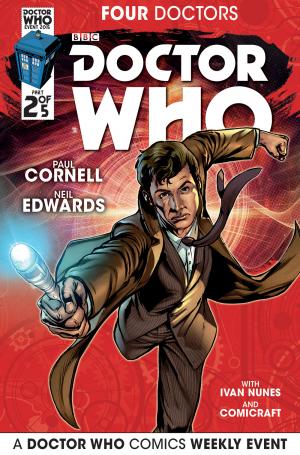 WRITER - PAUL CORNELL;
WRITER - PAUL CORNELL; Doctor Who: The Sixth Doctor - The Last Adventure
Doctor Who: The Sixth Doctor - The Last Adventure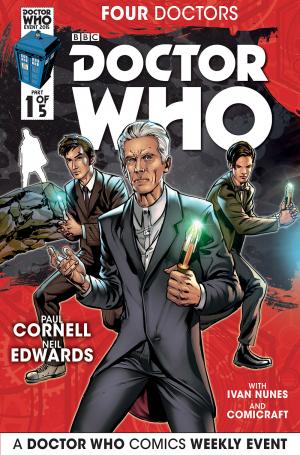

 WRITER: Rob Williams
WRITER: Rob Williams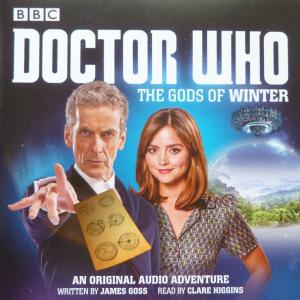
 Writer: Robbie Morrison;
Writer: Robbie Morrison;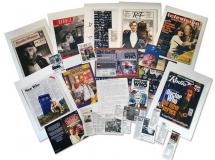
 Renowned TV series writer
Renowned TV series writer  Written by Eddie Robson
Written by Eddie Robson Circle us on Google+
Circle us on Google+